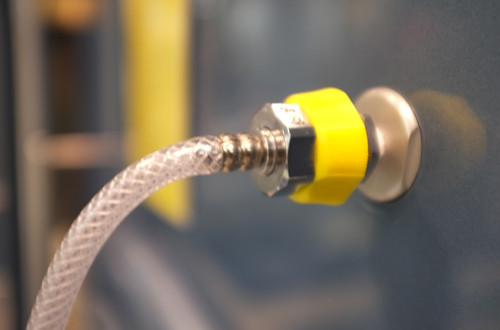Mechanical Ventilation and Monitoring of Intubated Patients in a Monoplace Chamber Compressed with Air
Bill Gossett, RRT, CHT
Abstract of the Undersea and Hyperbaric Medical Society Annual Scientific Meeting
June 14-16, 2007, Ritz-Carlton, Kapalua, Maui, Hawaii
Abstract
BACKGROUND: Logistical problems with an ongoing closed head trauma RCT required changing from our multiplace to a monoplace chamber. These critically ill patients all required mechanical ventilation, head elevation, and an array of lines and monitoring wires. The complexity of these patients required careful selection of a chamber and a ventilator. We wanted to monitor the ventilatory status of these patients with more than was possible with the Wright Respirometer. We wanted to compress with air because of increased fire safety, cost savings, and flexibility to use alternate methods for monitoring.
MATERIALS AND METHODS: We purchased the new 34-inch BARA-MED XD® monoplace hyperbaric chamber from Environmental Tectonics Corporation. Aware of limitations with the Sechrist 500A hyperbaric ventilator we began working with Oceanic Medical Products, Inc. and their Magellan ventilator, which does not require an oxygen atmosphere for entrainment. After approximately a year of testing and modifying we were satisfied that the Magellan ventilator would meet our needs. For monitoring the patient’s ventilatory status we replaced the Wright Respirometer with the Ohmeda 5410 Volume Monitor. The sensor for this unit was safely adapted for use in an air filled chamber with the monitor itself placed outside. Air breaks can be given using an air-oxygen “switching unit” that supplies the ventilator’s drive gas.
RESULTS: To date, we’ve completed 33 treatments, without any ventilatory complications, using the Magellan ventilator and the Ohmeda monitoring system.
CONCLUSIONS: The 34-inch BARA-MED XD® monoplace chamber, with custom-designed door penetrations, is suitable for providing hyperbaric oxygen to critically ill head-injured study patients with multiple invasive neurosurgical monitoring devices. The modified Magellan ventilator allowed compression of the chamber with air. The Ohmeda 5410 Volume Monitor allowed detailed monitoring of ventilation parameters and safe and accurate ventilation during treatment.

